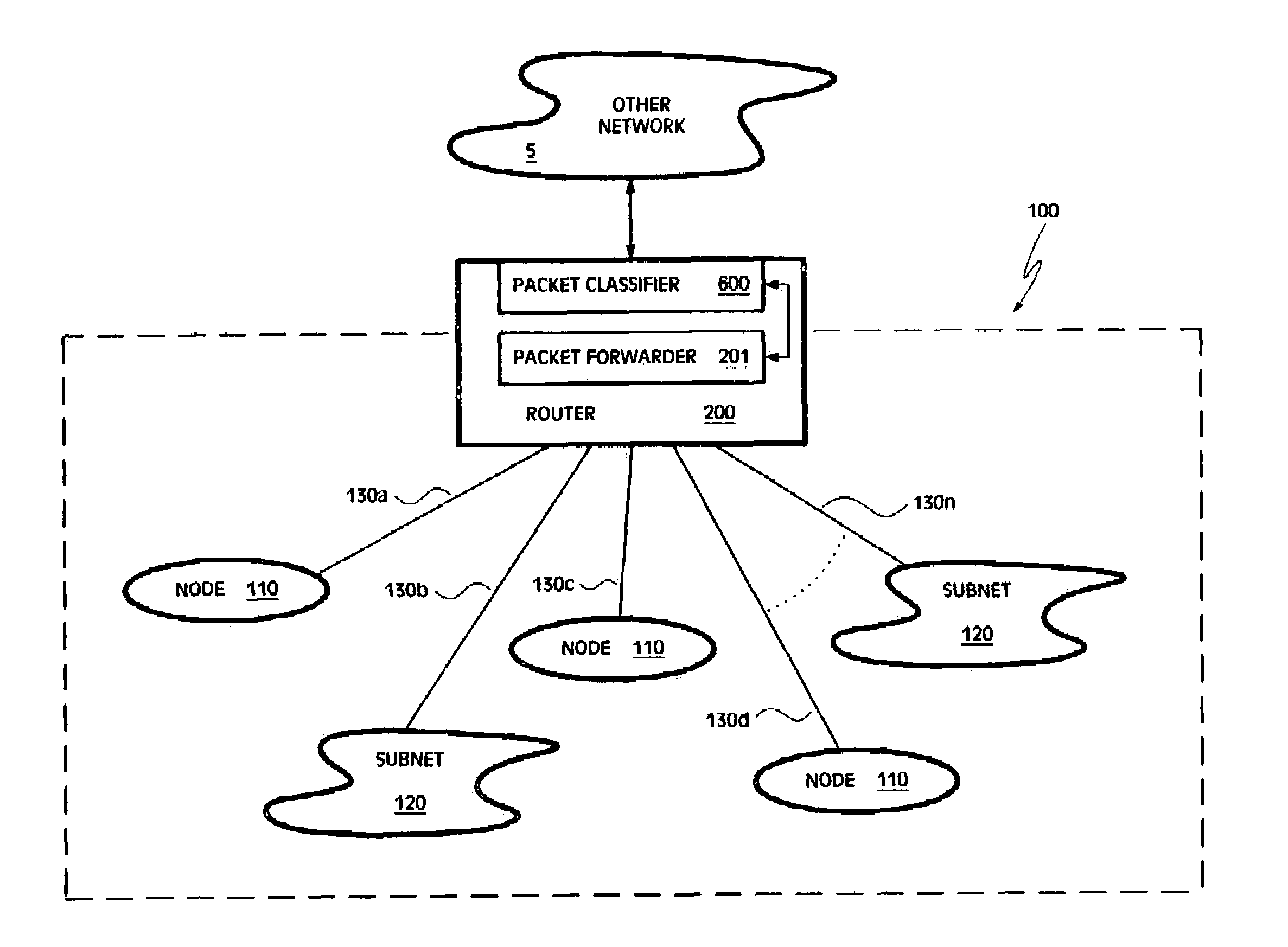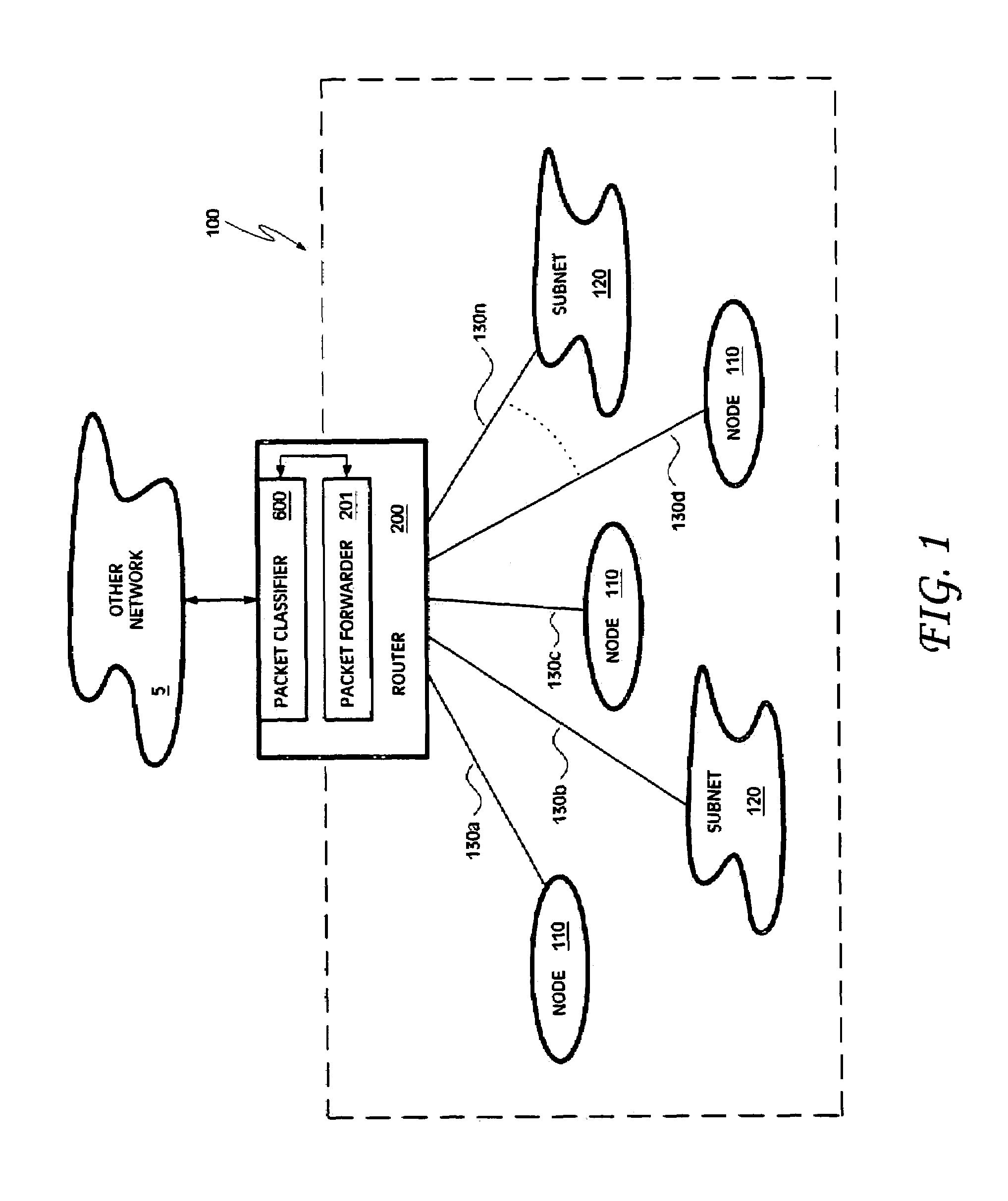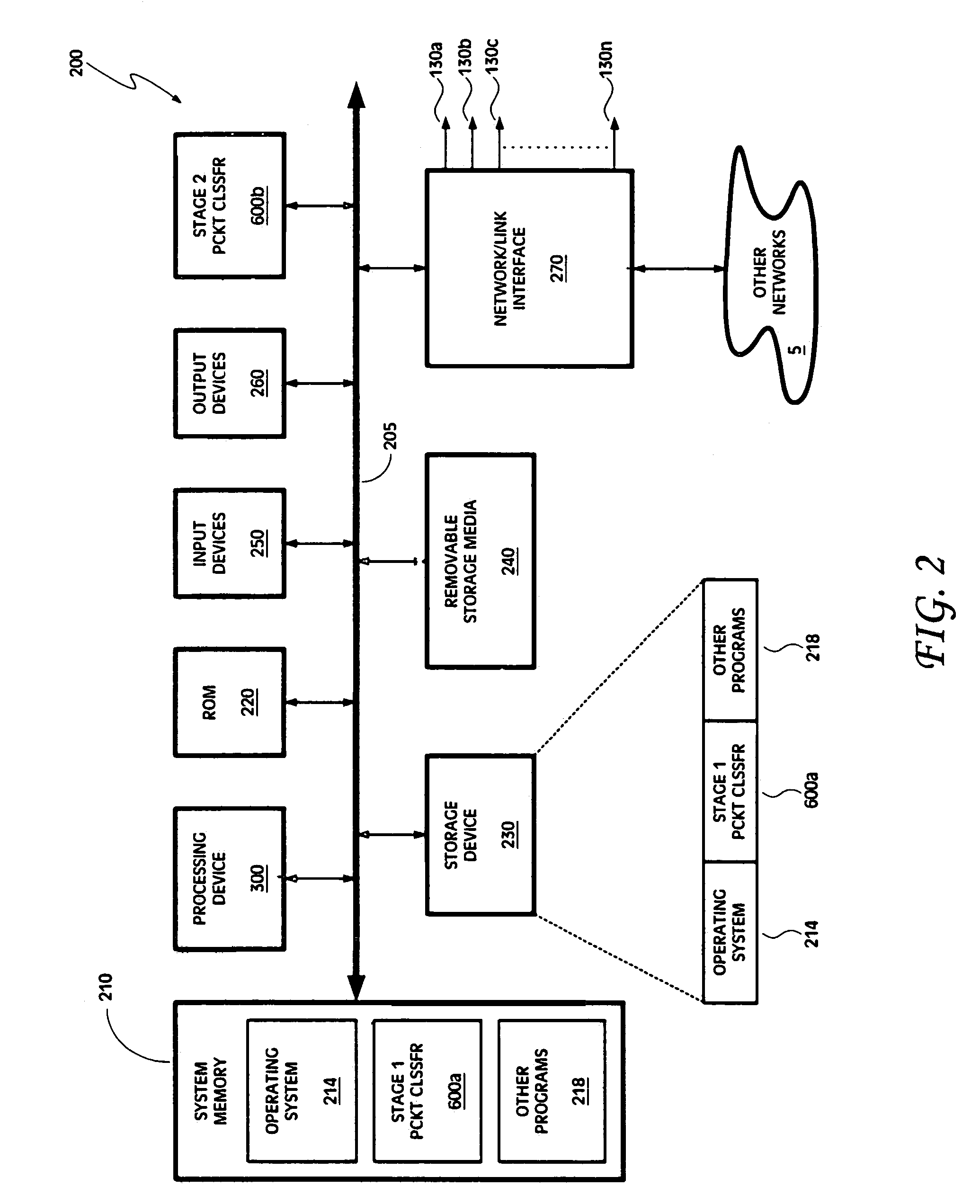Method and apparatus for two-stage packet classification using most specific filter matching and transport level sharing
a packet classification and transport level technology, applied in the field of computer networking, can solve the problems of insufficient packet routing based on destination address alone to meet the growing demand for greater bandwidth, and high number of required memory accesses
- Summary
- Abstract
- Description
- Claims
- Application Information
AI Technical Summary
Benefits of technology
Problems solved by technology
Method used
Image
Examples
Embodiment Construction
[0036]Embodiments of a packet classifier are disclosed herein. The disclosed embodiments of the packet classifier are described below in the context of a router implementing a packet forwarder (e.g., a firewall, a QoS based forwarder, etc.). However, it should be understood that the disclosed embodiments are not so limited in application and, further, that the embodiments of a packet classifier described in the following text and figures are generally applicable to any device, system, and / or circumstance where classification of packets or other communications is needed.
[0037]Illustrated in FIG. 1 is an embodiment of a network 100. The network 100 includes a router 200 having a packet forwarder 201. The router 200 (and packet forwarder 201) may implement a specified security policy, QoS forwarding, and / or resource reservation, as well as any other desired policy-based forwarding scheme. To discriminate between packets belonging to different flows and / or between packets associated wit...
PUM
 Login to View More
Login to View More Abstract
Description
Claims
Application Information
 Login to View More
Login to View More - R&D
- Intellectual Property
- Life Sciences
- Materials
- Tech Scout
- Unparalleled Data Quality
- Higher Quality Content
- 60% Fewer Hallucinations
Browse by: Latest US Patents, China's latest patents, Technical Efficacy Thesaurus, Application Domain, Technology Topic, Popular Technical Reports.
© 2025 PatSnap. All rights reserved.Legal|Privacy policy|Modern Slavery Act Transparency Statement|Sitemap|About US| Contact US: help@patsnap.com



